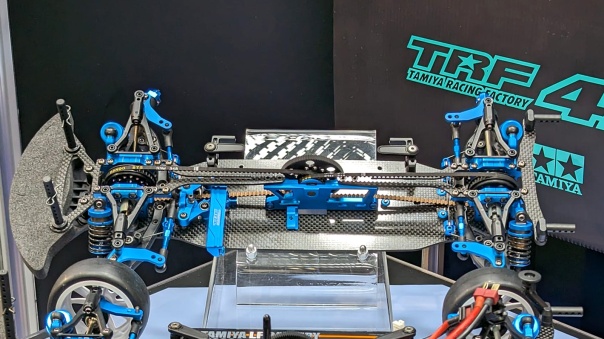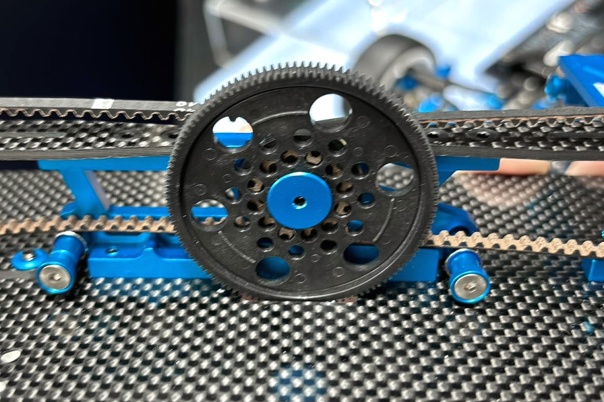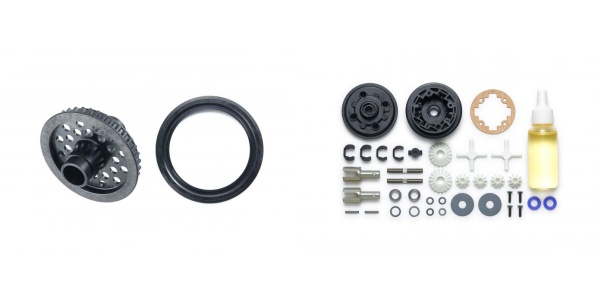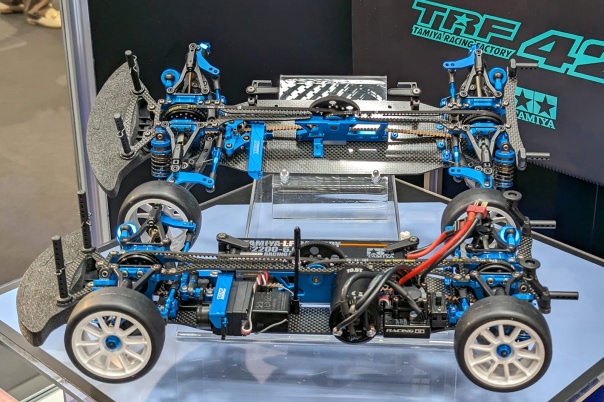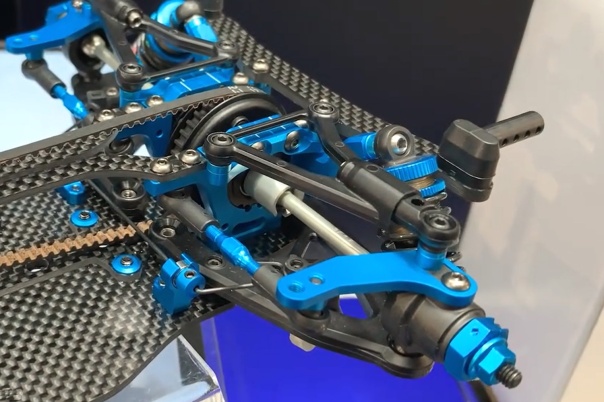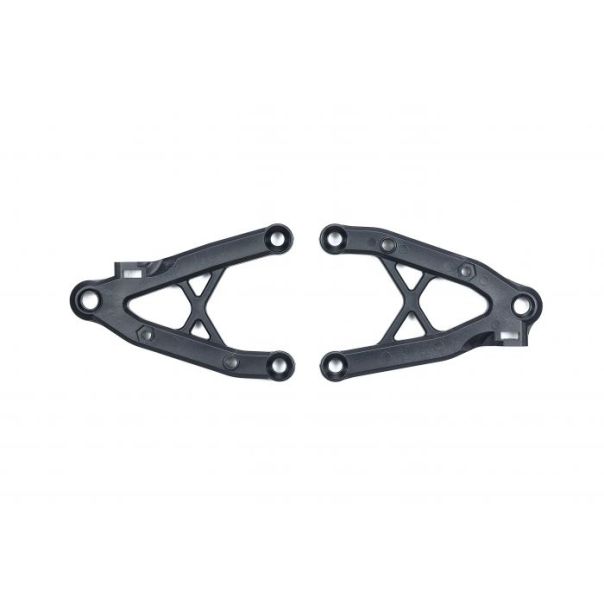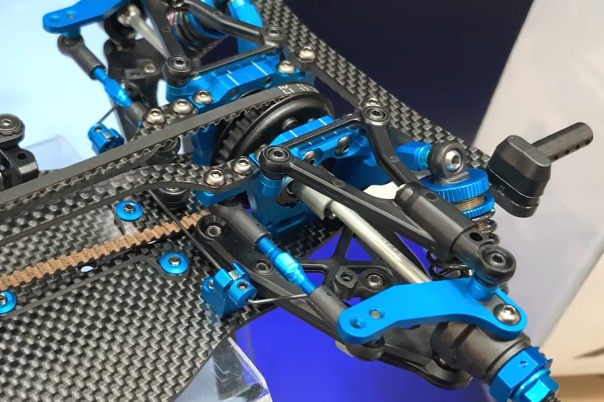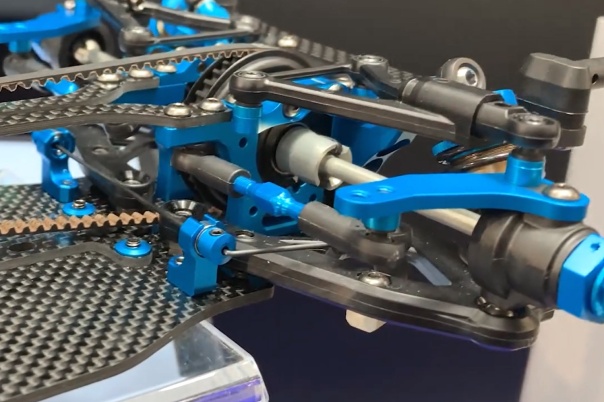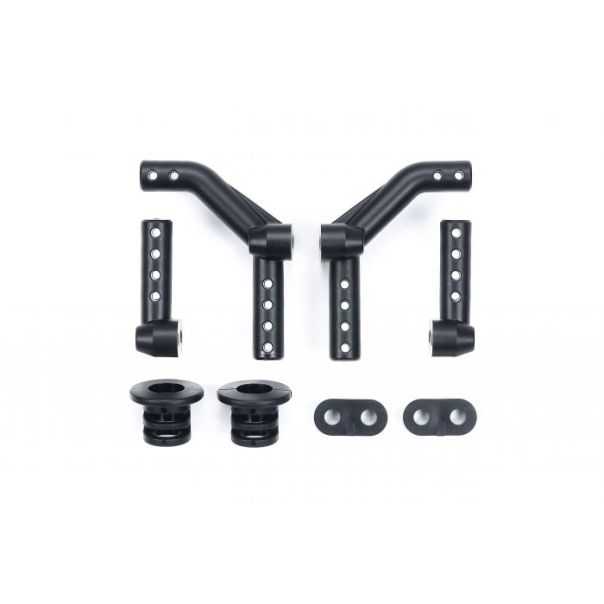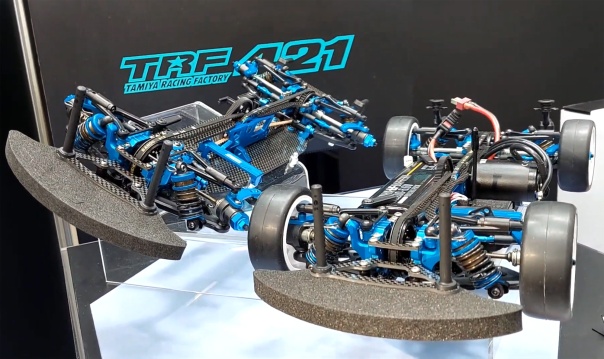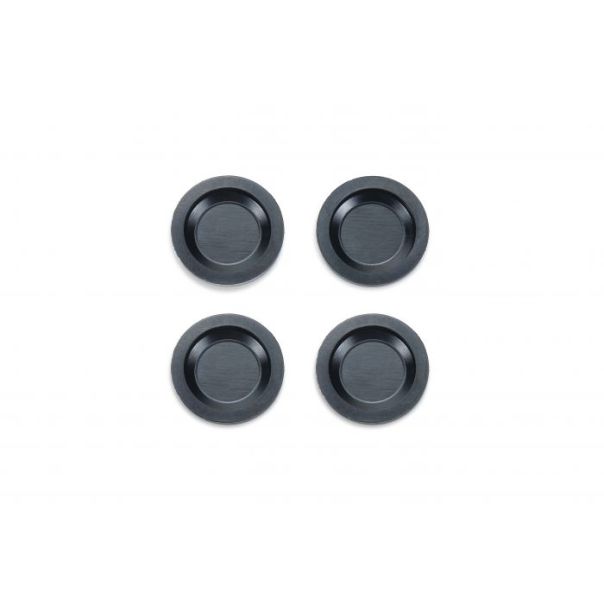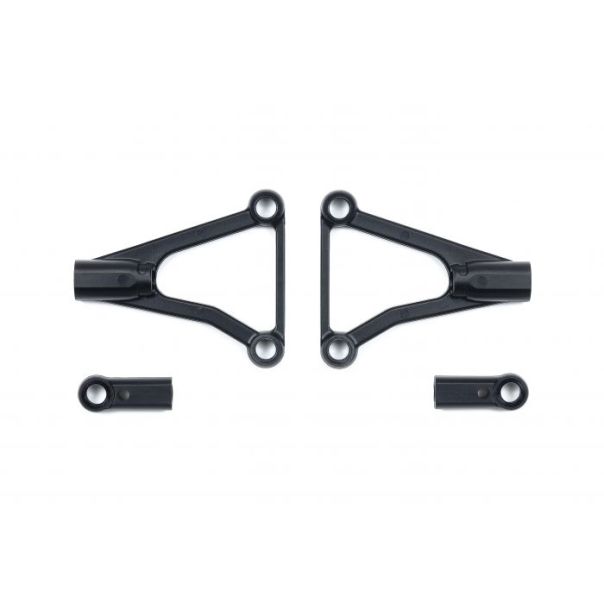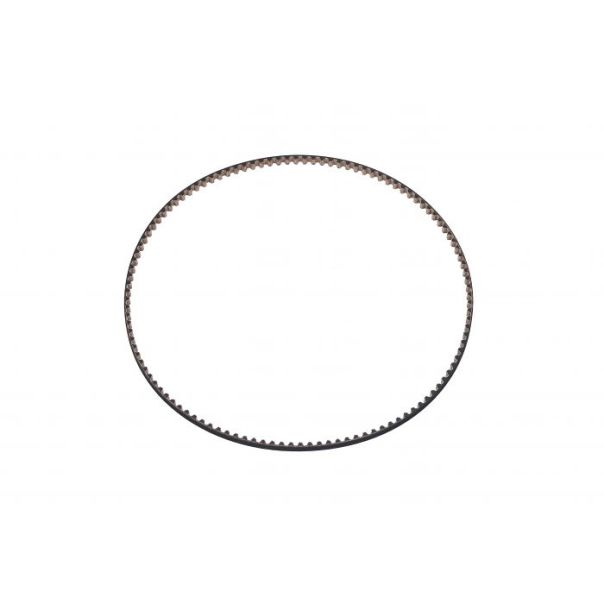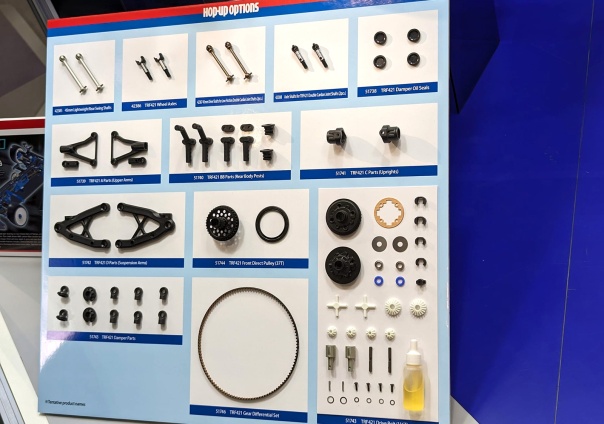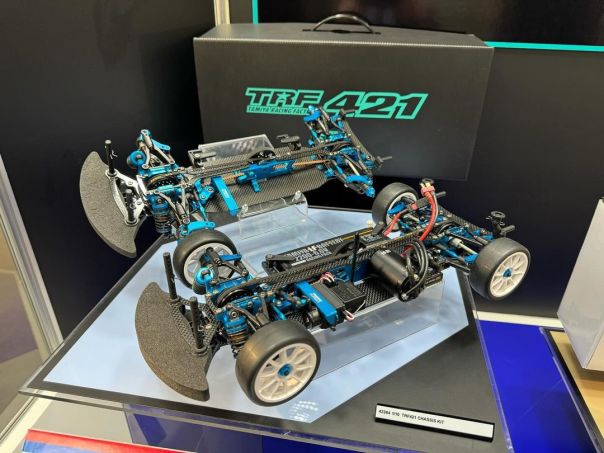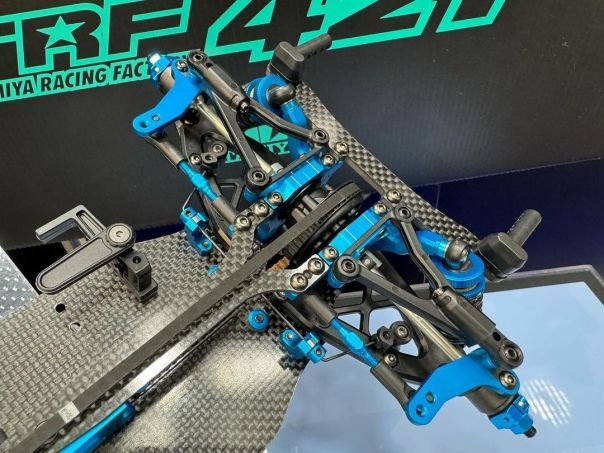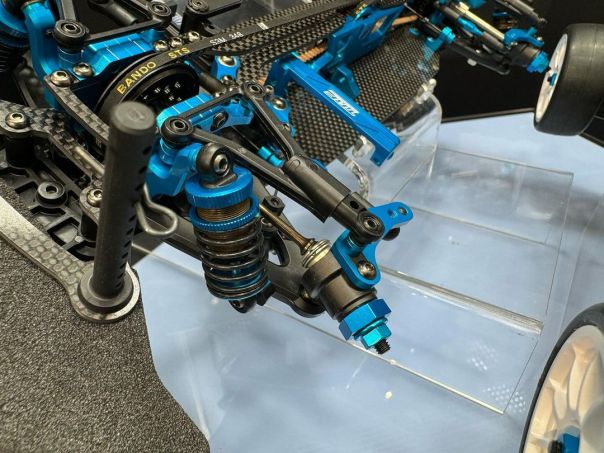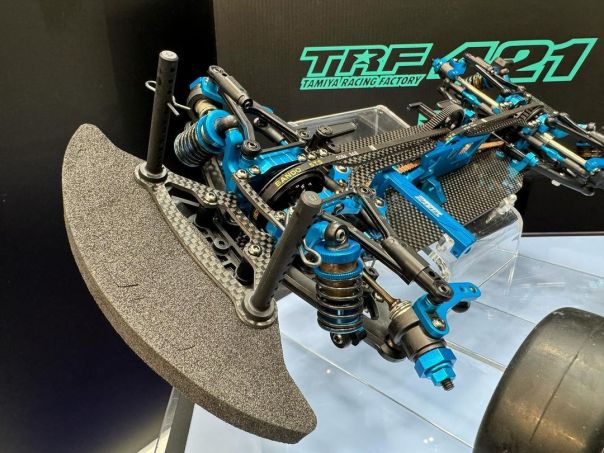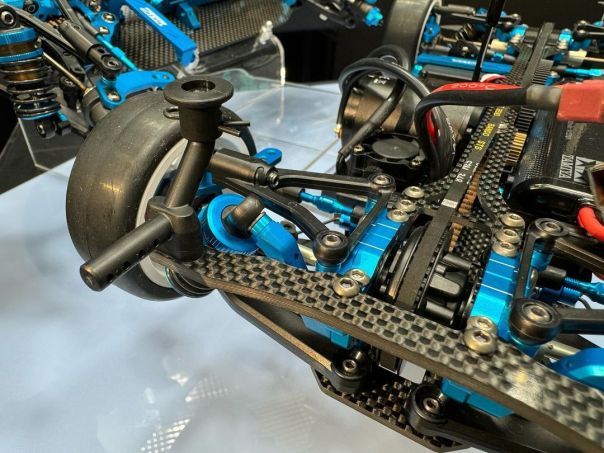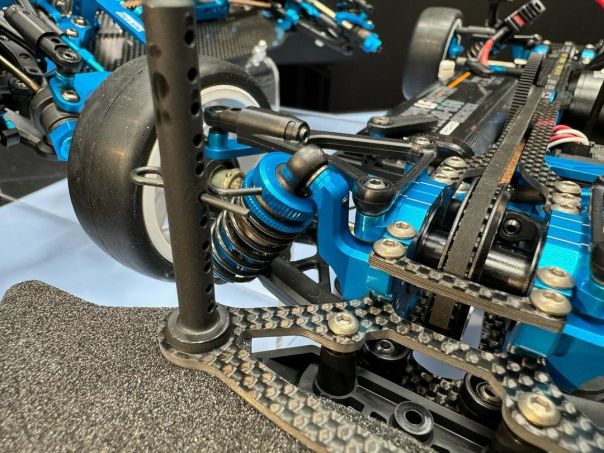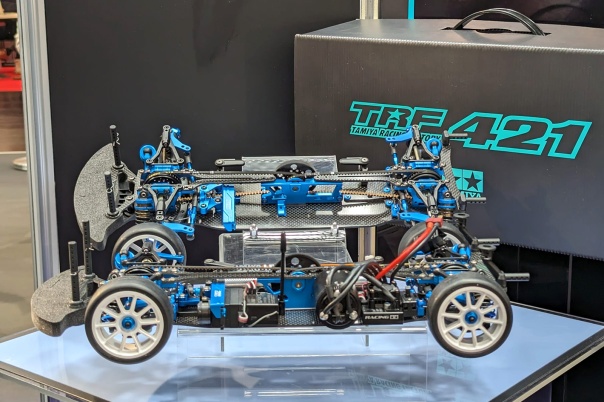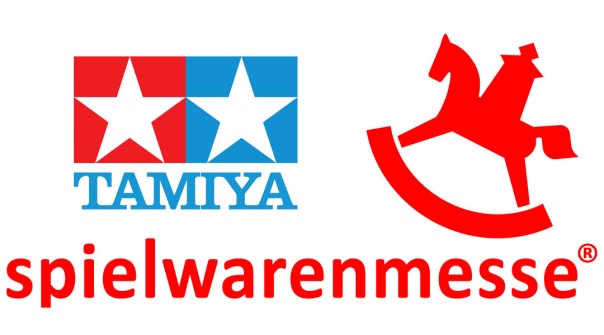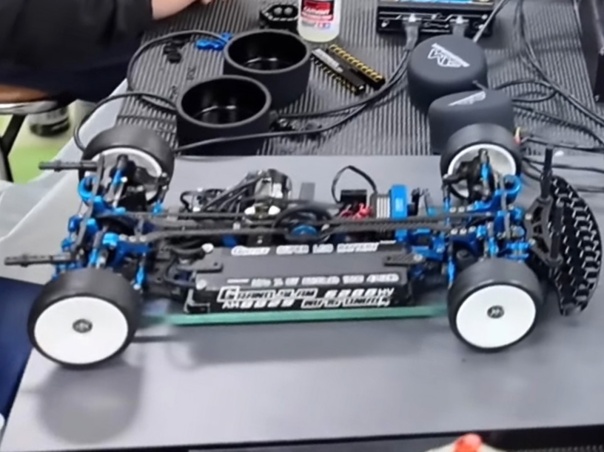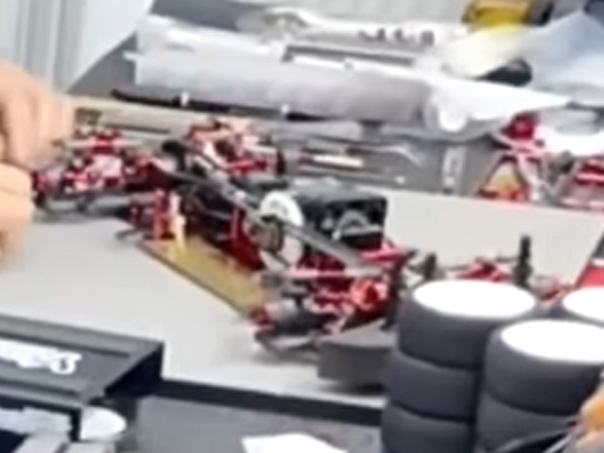Monthly Archives: January 2024
TRF421 Launch – Technical Analysis
After much speculation and waiting, Tamiya yesterday launched their new top-end touring car chassis kit – the TRF421.
42384 TRF421 Chassis Kit
The TRF421 launch happened almost to the day two years after the predecessor was revealed, with the TRF420X presented late January 2022. Just like the TRF421, the TRF420X was planned to be launched at the Spielwarenmesse, often also called the Nuremberg Toy Fair, but when the 2022 edition was cancelled it was launched online only.
Already in late 2022 we saw development cars evolved from the TRF420X racing (and winning) at the JMRCA All Japan TC championships. Fast forward to February 2023 and these development prototypes had been taken further, and indeed again used to great results at the 2023 JMRCA All Japan TC championships. These gave clear hints that something new was in the works, but although many expected these development cars would make it into production, the word from Tamiya (the little info you could get) was always that these were not planned for production, but should be more seen as testing of various concepts.
However, when the TRF421 emerged yesterday I have a feeling most were quite surprised at what they saw, and I will admit that while the overall concept is as expected, I was also quite surprised when seeing the complete TRF421.
It is of course easy to brush it aside as a Mugen copy, a blue MTC2 etc. But look close enough and you’ll notice that this car is its own design, of course inspired by several of the current cars, but with many detail differences. And if you have any significant experience of top-level touring cars, you’ll know that it’s precisely all those small details that make the difference.
Now let’s take a closer look at the TRF421 and see what we can find at this stage when we only have limited information to go on.
Chassis & Drivetrain
The TRF421 is obviously a brand new platform from Tamiya, and almost everything has been changed, starting with the layout and drivetrain of the car.
The motor mount is now one-piece, and this together with the spur gear and axle has been moved, making it a middle-spur car like most other nowadays. The spur gear has also been moved to the right of the pulley and belts, instead of in-between as has been the case since the TRF416. This means that the pulley is narrow and that both belts are as close to the centre-line as possible.
Front and rear belts are equal length at 116T or 348mm, which is 1T or 3mm shorter compared to most other mid-spur cars out there. A small but significant difference as it might affect the position of the axles and driveshaft angles, which has a big effect on any car. The only other car I know of that use a 348mm belt is the Axon TC10/3, which runs a 351 front belt and 348 rear belt.
The 421 has a similar super slim and beautiful fan mount like on the 420X, but mounted directly to the chassis and not the motor mount.. The belt tension bearings in the lower part of the motor mount appear to be adjustable.
The change to the drivetrain design now means that spur gear changes will be super easy and quick.
Since the belts have moved closer to the centre-line, a new gear diff and spool was required. These are still 37T in size, and the only significant design change appear to be to the offset of the belt pulleys.
Because of this change, the car most likely has a closer bulkhead spacing (narrower) compared to the 420X.
The car was shown with two different upper deck solutions – a two-piece on the upper car in the image above, and a single-piece upper deck on the lower car.
The way it was presented in text by Tamiya (“a choice between one- and two-piece upper deck layouts for different chassis flex”) gives you the impression that both will be included in the kit, and considering they included an alu AND carbon chassis with the TRF420X, it would not be a surprise to see both upper deck options in the kit box.
The separare style upper decks can be fixed to the motor mount with two screws each in front of and behind the spur axle. These are positioned quite close to the spur axle to make the (separate) upper decks longer.
For the 421, no alu lower deck has so far been shown, so I would not expect that to be available at the same time as the car.
Also notice the rear chassis flex brace, which is now longer than on the TRF420X.
The TRF421 kit chassis is carbon fibre (most likely 2.25mm thick) and conventional in design. In the photo from below you see how the motor mount etc. is secured to chassis.
Cars with inner pivot balls often have long chassis overhang front and rear, but it’s good to see that this does not appear to be the case with the 421. More on this later.
Suspension
The suspension must be classed as the biggest change on the TRF421 when you compare it to previous generation TRF cars. Tamiya got some recent experience with the TB EVO 8 and TA08 which had outer pivot balls and inner hinge pins, but on the TRF421 there are now pivot balls everywhere, instead of inner and outer hinge pins which has been used on all TRF TC’s until now.
The TRF421 obviously have longer suspension arms, so even though the outer pivot point is now not as far outside, the arms are still 7mm longer. When you want to use long arms like this, you almost automatically end up with inside pivot balls instead of pins, unless you completely want to re-think the bulkhead design.
The change to inner pivot balls will take away the opportunity to change pivot witdth, as well as wheelbase changes by way of moving the arm.
While the suspension concept is similar to many other current cars, most of these high-end cars use carbon lower arms and alu uprights, while the Tamiya uses composite parts in these places. This gets rid of many of the add-ons needed on carbon arms, but perhaps more significantly the materials used will give a different feel on-track. It will also be interesting to check weights at a later stage.
Left and right arms are the same, and will come in packages of one front and one rear arm per package – in true Tamiya tradition.
Notice how close to the outer pivot the rear damper is mounted.
Uprights are the same on all four corners of the car, with similar blue anodised alu arms fitted to the top of the upright as well.
The upper arms are again composite and quite slim in design, so I expect them to give a bit of flex to the suspension. These are sold in pairs, i.e. the LF and RR will be the same, and RF and LR corners will again use the same upper arm.
There is no info yet on the size of the pivot balls, but looking at the pictures, perhaps the lower arms use 5.8mm and upper arms 5mm(?). Just a guess.
Caster front and rear can be adjusted via the two-piece upper arm mounts / upper bulkheads. The upper arm mount is fastened from the side, and by sliding this part you adjust caster. This design could also mean that you can adjust the upper arm inner pivot point, i.e. in reality you would adjust upper arm length.
Driveshafts are slightly longer than before, with both front and rear shafts now 45mm instead of 44/43mm on the 420X. Other than that the design appear to be similar, even though both front and rear wheel axles are also new. They still appear to use the same 5x10mm wheel bearings and usual clamping wheel hexes though (these look to be 5mm wide on the car). It could be that the car use the narrower (and lighter) 5x10x3mm wheel bearings, and therefore the wheels axles would be shorter while the driveshafts are longer. This would then move the driveshaft joint outwards. But this is just speculating at this point.
The car appears to use the newly released alu diff holders (eccentrics), at least that’s what it looks like when you look closely at the photo above.
With the suspension system chosen for the 421, you obviously get the benefit of infinitely adjustable toe-in on the rear, as well as the option of using active toe-in settings.
The roll bars are now chassis-mounted and very low, but still ball bearing supported. They mount to a small stand-off on the lower arm, which means we finally get rid off the balls moulded into the arms like on the TRF420 suspension.
Dampers
For the TRF421 Tamiya developed new much shorter dampers with their length cut by 5.5mm compared to the previous SSBB version.
Prototypes of these have been tested for a long time on the TRF420X development cars, so hopefully everything will be fine-tuned now that they reach production. Like expected, they use the recently released new lower spring retainers, and it appears that much of the length has been cut in upper and lower plastic parts, as well as the top alu cap and oil seal. This should mean that the oil capacity is still similar to the older dampers. They would slso appear to still use normal 20mm long springs, which would be very positive as you can still use the springs you already have.
The towers are now aluminium and mounted super low straight to the lower bulkheads with two screws.
Mounting them only to bulkhead and not also the chassis like some cars possibly also gives more room for the suspension arms, with the end result being a shorter chassis overhang front and rear. Whether its better to mount the dampers to the bullkheads or perhaps more vibration-free to the chassis is of course another question…
Finally, in the image above you can also see that Tamiya retained the TRF420 suspension feature of alu damper mount inserts in the suspension arms. The Tamiya product info available so far also mentions that “three damper pivot positions are provided”.
Steering and other details
The steering system is similar to how it has been, with the bellcrank arms looking the same. The steering bridge is different though, as the mounting points for the steering links have been raised for these to clear the chassis mounted roll bar and meet the high-mounted steering arms on the uprights.
The servo mount is again similar to previous floating mounts from Tamiya, but it’s still a new design as it looks like it attaches to the chassis further back and has a new pattern machined into the upper part around the TRF logo.
The battery mount seen in this photo as well now appears to be plastic instead of the alu/carbon combination of the 420X, and has more adjustability built-in. A big positive is that the chassis is now pre-drilled so for shorty batteries as well.
Below the steering you can see that special 5g ballast weights are again included, as is the carbon bulkhead brace mounted to front of the bulkheads.
In addition to the 5 gram weights under the steering, the TRF421 also get a couple of 5g weights that go under the spool outdrives.
As has been the case for very long already, TRF kits come fully equipped out of the box!
The front bumper and body posts are carried over from the TRF420 and 420X while the foam bumper looks to be from the TB EVO 8 / TA08.
The carbon bumper brace has less material than the 420X, but goes all the way back to the bulkheads for added crash protection.
Two different rear body mounts are included, with the horisontal-only version seen above. Different horisontal/vertical posts are also included and seen on the car with electronics installed which you see higher up in this post. These have body supports which would hold the body vertically while it is secured with the horisontal post. In the photo below you see the body post parts themselves. Additionally you can obviously opt for vertical only posts by using front body posts at the rear as well.
It’s good that Tamiya gives options here, as many big race wins lately has been taken with vertical posts once again, and many prefer the simplicity of working with vertical posts.
The body posts are mounted to what looks like a 3mm thick carbon fibre plate.
This was supppsed to be a short look at the TRF421, but as there is so much new I went on for too long once more. Sorry 🙂
Once the car is available in a couple of months you can expect a full and thorough build and presentation of the car with all details.
It will be super interesting to see how this compares on-track to the TRF420X, and also to my experience with the MTC2. I hope that it will retain and improve on the forgiving and easy-to-drive feeling I always had on our low-grip asphalt tracks with the 420X, while adding more performance. I still have my TRF420X so it should be easy enough to get answers. Who knows, maybe there will be a third car to compare to as well (check back in the next couple of weeks)…
TRF421 Official Spare Part Images
Official product images from Tamiya for the first TRF421 spare parts (with 51*** part numbers).
51738 TRF421 Damper Oil Seals
51739 TRF421 A-Parts (Upper Arms)
51740 TRF421 BB-Parts (Rear Body Posts)
51741 TRF421 C-Parts (Uprights)
51742 TRF421 D-Parts (Suspension Arms)
51743 TRF421 Damper Parts
51744 TRF421 Front Direct Pulley (37T)
51745 TRF421 Gear Differential Set
51746 TRF421 Drive Belt
Tamiya TRF421 – Description & Details
Tamiya’s official first description of the all new TRF421 Chassis Kit.
42384 TRF421 Chassis Kit
LIMITED EDITION
The New Top Dog
We have a long tradition of high-spec touring car race chassis here at Tamiya, and the Tamiya Racing Factory now brings you their latest masterpiece: the TRF421 Chassis. This 2-belt driven 4WD carbon fiber double-deck design is loaded with new features such as an updated drivetrain, a new lower deck shape, front and rear upper A arms and new shorter dampers, all of which promise to translate into serious speed on the track! Other notable features include a choice between one- and two-piece upper deck layouts for different chassis flex, plus updated suspension geometry that keeps the chassis more stable. Take this opportunity to get a hold of our latest top-end chassis, and enjoy some seriously fun racing!
• The drivetrain uses a front direct coupling and rear oil-filled gear diff. Equal length front and rear drive belts minimize pitch.
• Suspension arms are a rigid “A” design with 7mm longer span for stable roll, while upper arm mounts can be slid to adjust caster. Three damper pivot positions are provided.
• Dampers are 5.5mm shorter than on the TRF420X, for a lighter chassis and lower center of gravity. Attach them directly to aluminum mounts and fine-tune with spacers.
Body motor, tires R/C equipment, battery pack and charger are sold separately.
First Tamiya TRF421 Parts
First TRF421 specific parts with part numbers from Tamiya.
42385 45mm Lightweight Rear Swingshafts
42386 TRF421 Wheel Axles
42387 Drive Shaft with Low Friction Double Cardan Joint (2 Pcs.)
42388 Axle Shafts for TRF421 Double Cardan Joint Shaft (2 Pcs.)
51738 TRF421 Damper Oil Seals
51739 TRF421 A-Parts (Upper Arms)
51740 TRF421 BB-Parts (Rear Body Posts)
51741 TRF421 C-Parts (Uprights)
51742 TRF421 D-Parts (Suspension Arms)
51743 TRF421 Damper Parts
51744 TRF421 Front Direct Pulley (37T)
51745 TRF421 Gear Differential Set
51746 TRF421 Drive Belt
Tamiya TRF421 – Lots of Photos
Just under one week after I speculated about the next TRF TC, Tamiya today released the all new TRF421 at the Nuremberg Spielwarenmesse / Toyfair 2024.
42384 TRF421 Chassis Kit
More to follow…
Some photos from Tamiyablog, Tamico, and The RC Racer
Tamiya XM-01 PRO Chassis Kit – First Info
Following the first info on new Nuremberg 2024 releases by Tamiya, here comes exclusive full info on one of the more exciting new releases – the all new XM-01 PRO Chassis.
58738 XM-01 PRO Chassis Kit
This shaft-driven 4WD chassis kit (M-chassis size) is another addition to the R/C rally line-up, and has features such as three types of wheelbase, new suspension components and a polycarbonate chassis cover. Add this chassis kit to your M-rally collection!
About the Model
• This is a 1/10 scale R/C chassis assembly kit.
• Equipped with front mid-ship, longitudinal motor position.
• Changing rear section allows a choice from three wheelbases (short: 210mm, middle:225mm, long: 239mm).
• Bathtub frame chassis and polycarbonate chassis cover plus front inside polycarbonate cover and rear section are newly-molded parts. Mud guards helps prevent dirt and dust from getting inside.
• New front C-hubs and rear uprights, plus lower suspension arms allow two types (about 8mm or 13mm) of ground clearances.
• Caster angle can be set at 5 degrees by suspension mounts.
*For comparison, the XV-02 PRO chassis kit uses caster blocks which feature 6-degree caster angle. (XV-01 chassis: 10-degree caster angle)
• The drivetrain employs oil-filled gear differential for front and rear.
• Comes with two 39T differential gears and one 40T differential gear for adjustment of front and rear drive balance.
• Use 39T gear (w/15T gear) on the front and 40T gear (w/15T gear) on the rear for drive balance bias to front and vice-versa for drive balance bias to rear.
• It features a longitudinal upright battery pack position in the center-left for optimum balance.
• Front bumper with skid angle contributes to reduce surface contact.
• Aluminum dampers are employed at front and rear.
• M-Chassis 11-spoke racing wheels (Item 51394) are paired with 60D rally block tires (Item 51427).
• Front and rear universal drive shafts come as standard.
• Compatible with center diff setup and separately sold slipper clutch.
• Some Hop-Up Option parts for the XV-02 PRO chassis kit can be used.
• Low-profile servo is recommended. (Standard servo can be used, but it comes into contact with the front inside polycarbonate cover.)
• Please note that this chassis requires separately sold body, battery pack, motor and R/C equipment.
Examples of compatible Hop-Up Option Parts
22046: XV-02/TT-02 Ball Differential Set (39T)
22047: XV-02/TT-02 Front Direct Coupling Set (39T)
22048: XV-02 Slipper Clutch Set
22049: XV-02/TT-02 Oil Gear Differential Unit
22050: 06 Module Spur Gear (70T) for XV-02 Gear Differential (Use with Item 22049 XV-02/TT-02 Oil Gear Differential Unit.)
22053: XV-02 Aluminum Spur Gear Holder
22055: XV-02 Aluminum Adjustable Suspension Mount (XH)
22056: XV-02 Aluminum Damper Stay Mount
22064: TT-02 Type-SRX Front Direct Cup Joints (Use with Item 22046 XV-02/TT-02 Ball Differential Set (39T) or Item 22047 XV-02/TT-02 Front Direct
Coupling Set (39T).)
22072: XV-02 Aluminum Steering Arms (L/R)
54802: TB-05 Aluminum Steering Bridge
54884: Aluminum Adjustable Separate Suspension Mounts (A)
First Tamiya Nuremberg 2024 News
Some early Tamiya news from the Nuremberg Spielwarenmesse 2024!
47501 Alfa Romeo Giulia GTA (Painted Body)
58734 Citroën DS (MB-01)
58736 Ford Baja Bronco (CC-02)
58738 XM-01 PRO Chassis Kit
58739 1998 Honda NSX Racing (TT-02)
More to follow….
TRF420X Based Development Prototype
This Tamiya TRF420X based development prototype can still be spotted racing in Japan every now and then.
It looks to be the same version used at the JMRCA All Japan TC Championship 2023, which I reported on here, and then later on these TRF prototypes in this post in December.
Wonder when we’ll see something production-ready released? 😉
Will it be a TRF420XR (like you would expect if it looked like these prototypes), will it be a TRF421, or something else?!
Kyosho TC Proto 2024 Spy Pics
We have already established that we like spy photos, right?
So how about starting the week with a couple of (admittedly very grainy) pics of the Kyosho TC prototype in it’s current state?
I have already reported on this in 2022, and a couple (1 & 2) of posts last year, but although these latest spy pics from January 2024 are very low quality, they still give the best insight yet into this prototype vehicle from Kyosho.
The prototype has sometimes been called the TF-8, which would of course be logical taking into account the Kyosho touring cars until now.
You can see that the car is very low, has a middle-spur layout, and retains a pin-style suspension. The dampers are short and mounted to alu towers.


